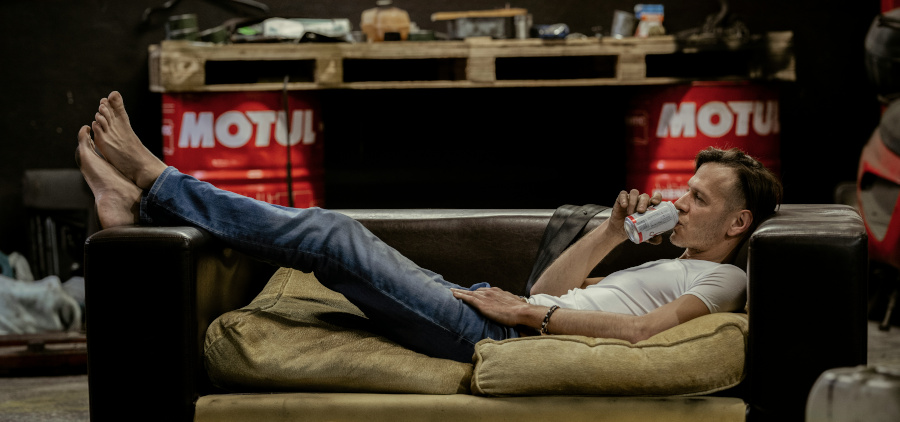
The Mindset and Productivity Ideas That Are Changing How Many CEOs Work
In this recent episode of Ali Abdaal’s podcast, I listened to a coach who specializes in working with CEOs talk about productivity, efficiency, and decision-making — but from a completely different perspective than usual.
Instead of focusing on ways to get more tasks done in less time, this approach digs deeper: into how we think and feel while we work.
Below, I share some key ideas from Joe Hudson, the “secret coach” behind Google, Apple, and OpenAI, that I found especially powerful — ideas that are helping many people, especially leaders, move forward without feeling stuck or burned out.
An Iterative Mindset
One of the quotes that stood out to me was:
"I don't care if we make mistakes or get it right, as long as we're moving forward."
This is a major mindset shift. It means we stop seeing mistakes as problems and start seeing them as part of the learning process that moves us forward.
The interesting part is that it’s not about being careless — it’s about building tolerance for mistakes as a natural part of both creative and executive work.
Why We Often Don’t Take Action
According to the coach, one of the biggest blockers to taking action is the fear of making mistakes in public.
The suggestion is to ask yourself:
“What’s the worst-case scenario? And then what?”
By exploring the worst outcome and continuing to ask what would happen after that, you start to see more options, more solutions — and far fewer real reasons to stay afraid.
How to Overcome Procrastination
Another approach the coach suggests is to reframe the question of “How do I stop procrastinating?”, and ask:
“What would make this so fun that I wouldn’t want to procrastinate?”
It’s a simple but smart way to redesign the experience instead of trying to force yourself through it.

Enjoyment as a Measure of Efficiency
Another key mindset shift:
Efficiency isn’t just about speed — it’s about enjoyment.
This challenges traditional productivity thinking, but it makes a lot of sense: when we enjoy what we’re doing, we bring more energy to it, which leads to doing it more, which leads to being more productive.
People who enjoy their work also tend to attract collaborators, clients, and opportunities more naturally.
Enjoyment can also reveal where improvements are needed:
“If you’re not enjoying something, that’s a perfect area to improve your efficiency.”
A practical way to do this: rate your tasks from 1 to 5 based on enjoyment.
If it’s not a 5, experiment with small changes to make the experience better.
Examples of micro-experiments:
Change your environment
Work with someone else
Take active breaks
Turn it into a game or challenge

“Should” as a Motivation Killer
Another powerful idea is that the word “should” often kills motivation.
Behind every “should” is a genuine desire — but we turn it into obligation, and that disconnects us from what we actually want.
Example:
“I should exercise” → What’s behind that? “I want to be healthy.”
How could I do that in a way I enjoy? Dancing, walking, swimming, martial arts, etc.
The suggestion is to turn obligation into choice — and find ways that feel more enjoyable and aligned with your actual goals.
When We Want the Outcome, But Not the Process
Another key reflection was this:
Sometimes we want a result, but resist the actions it takes to get there.
The coach suggests looking for the real need behind the desire.
Example:
I want financial freedom → Why? → To feel safe → Why? → To feel calm → Why? → To live joyfully.
Understanding the deeper need opens up more possible paths to meet it — not just the one that seemed “required.”
In this example, financial freedom is just one strategy for achieving a joyful life.
From Stagnant Thinking to Exploration
Many people believe success must come from doing hard things they don’t enjoy.
But according to this coach, that belief might actually be a sign of stagnant thinking.
The shift is to start asking:
“What if I could achieve success by doing things I actually enjoy?”
There are many real-world cases of people who found success in non-traditional ways, precisely because they allowed themselves to explore more aligned, enjoyable paths.
Conclusion
These aren’t typical productivity tips — they’re deeper principles that challenge how we think about work, success, and action.
What’s most interesting is that they’re helping leaders, entrepreneurs, and teams operate from a place that’s lighter, more creative, and more human.
It’s not about “doing more,” it’s about finding more authentic ways to move forward.
How to find those ways to move forward:
“It doesn’t matter if I get it right, as long as I’m moving forward.”
“What’s the worst that could happen? And then what?”
“What would make this so fun I wouldn’t want to procrastinate?”
“What desire is hiding behind this ‘should’?”
“Why do I want this?” → “And why do I want that?” → “And why that?”
“What options do I genuinely enjoy that could get me the result I want?”
What do you think of this approach?

